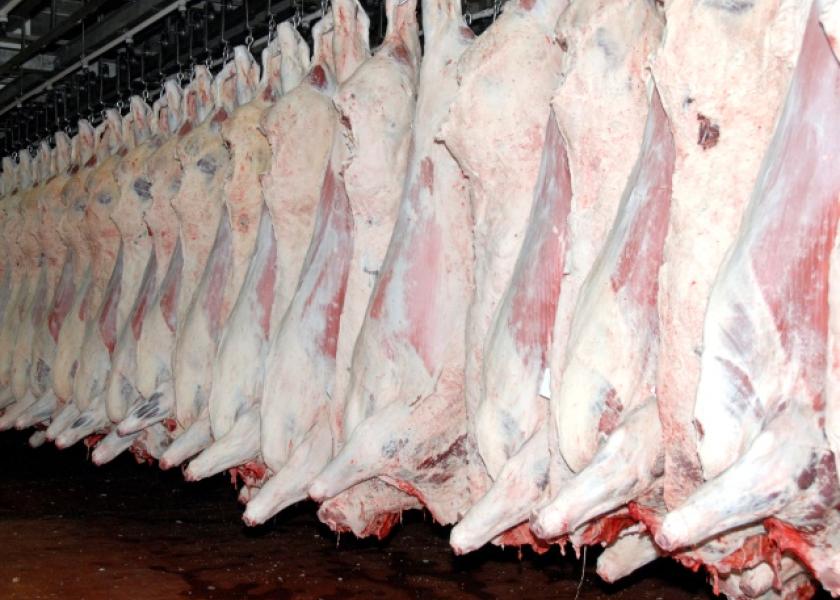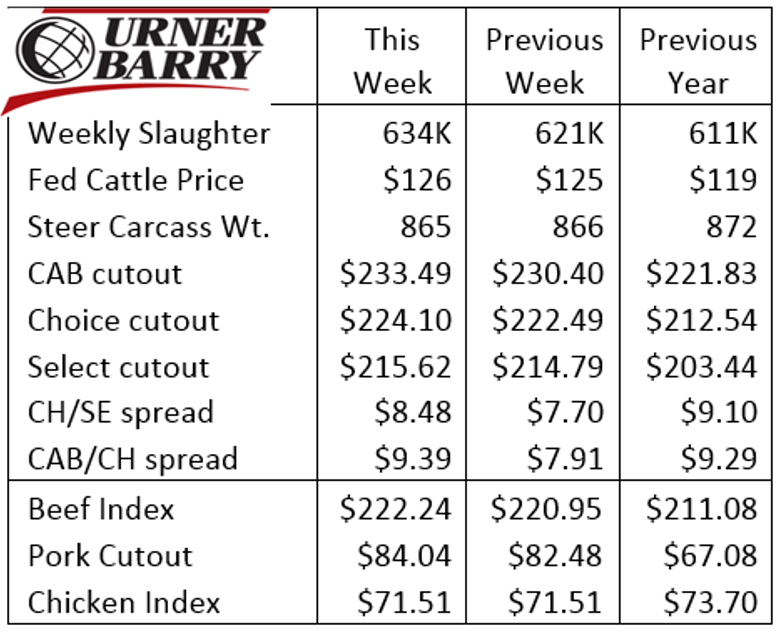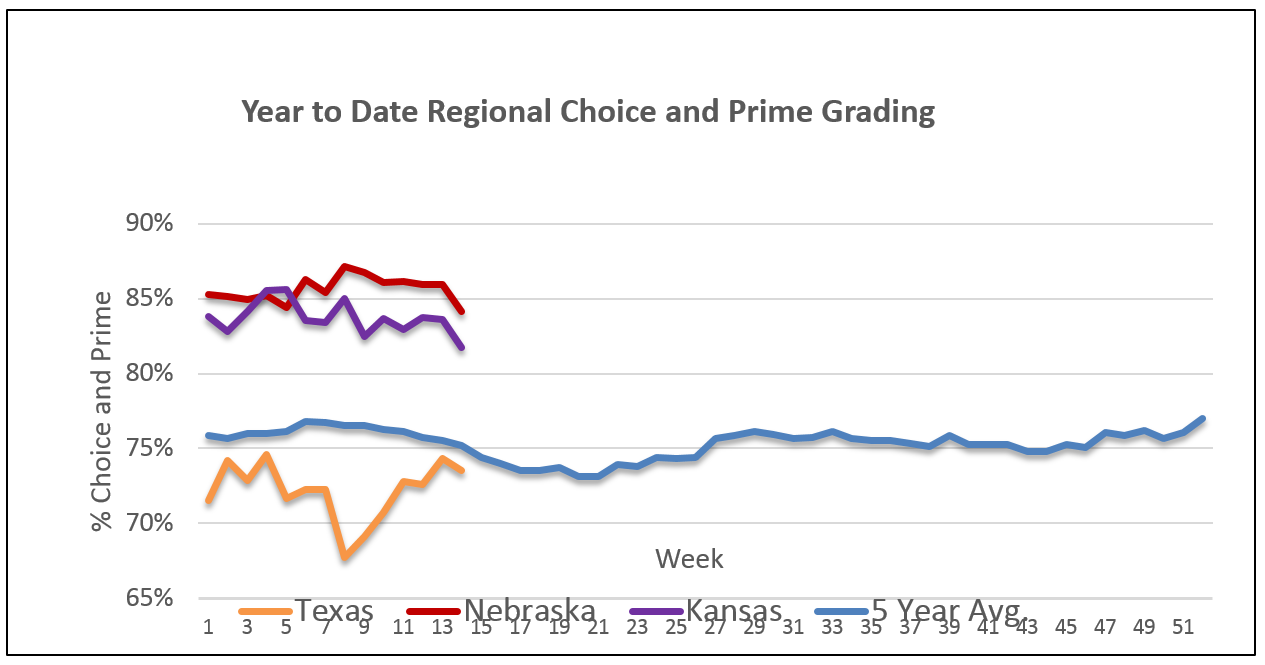CAB Insider: Texas Quality Grade Defies Seasonal Trend

By: Paul Dykstra, Certified Angus Beef
The year-to-date Choice quality grade is up almost 1 percentage point (ppt.) while the Prime share is up a massive 1.4 ppt. Of the three largest packing states, Kansas has led the combined Choice and Prime improvement since the first of the year, up 3.9 ppt. Nebraska has improved the same categories by 2.2 ppt., posting the highest Choice and Prime totals so far with a combined 85.6%.
It’s not all about northern improvement though, as Texas packers have enjoyed a most-recent March quality surge with both Choice and Prime grade ticking noticeably higher when the 1st quarter came to a close. A February lapse in grade took the measure down to 67% in Texas, but that was followed by the unseasonal spike depicted in the accompanying line graphs. February is normally marked as the annual quality grade high, with March beginning the seasonal decline as the industry works through the end of the marbling-laden oldest of the yearling fed cattle.
Nebraska and Kansas packers saw their carcass quality follow the expected lower pattern in March, but the significant increase down south is undoubtedly against the norm. Feedyard sector observers know that southern feedyards are better supplied with market-ready cattle than yards further north where weather has delayed target out dates in a wide swath of the feeding belt. Some of the steep trend-line increase in Texas appears to be a recovery from the February decline, but it surpassed the recovery point, then began moving higher than we’d have expected in March.
Market Update
Fed cattle last week traded in a similar pattern to the week prior with Kansas and Texas feedyards willing to sell earlier in the week on Wednesday while northern yards held on as no trade developed until late Friday. With the southern trade at $124/cwt., reports in the north varied. But with a total market average for the week at $126/cwt., it seems northern yards held on to their premium over the south due to weather-related cattle performance.
Last week’s winter storm delivered on the forecast quite well with significant amounts of snow and wind in northern Nebraska, eastern South Dakota, Minnesota and contiguous areas. Cow-herd operations with calving underway were certainly dealt another round of stress and hazard to calves in this storm. From a more immediate beef supply perspective, the moisture added insult to injury by freshening up muddy pen conditions in a wide area. Performance continues to be a major issue.
A large week of forward delivery boxed beef sales for the 61- 90-day delivery period occurred two weeks ago with 332 loads sold compared to 172 loads the week prior and just 166 loads last week. It appears end users not buying with formula pricing (as many do) found the market offering their “value buying opportunity” the last week of March. That was the second-largest pricing week for 61- 90-day delivery arrangements so far this year, behind the week of January 28th, which saw a 436 loads move.
Boxed beef cutout moved higher last week by a decent margin of $3.09/cwt. Loins drove the trend upward with a 26¢ increase on 0x1 strips pushing the wholesale price to $7.74/lb., 85¢ higher than the same week a year ago. Short loins saw a similar price spike and tri-tips are seeing a bit of unseasonal demand, $3.64/lb. in the wholesale spot market versus just $3/lb. a year ago. Top butts were steady, tenderloins keep on a seasonal slide and ball tips were lower. Ribeyes were resiliently defying the seasonal tendency for an April price drop, instead up 15¢ on the week with CAB lip-on ribeye at $7.90/lb.
End meats showed more firmness on chuck rolls and clods than the week prior but chuck tenders and teres majors devalued a bit. The round primal was the weaker link, with discounting on flats and eye of round—yet maintaining a higher price than the total CAB cutout this spring. Thin meats were mixed in price direction, as were CAB grinds, depending on the primal of origin.
Heifers Plentiful in Harvest Head Counts
A month ago we touched on the steer/heifer ratio with emphasis on the significance of fed heifers adding up to 38% of the fed cattle harvest at that time. The topic warrants a mention again this week as we update numbers at the conclusion of the first quarter. It’s hard to fathom, but the month of March saw a massive run on heifers in the weekly head counts bringing the month’s total to 9.5% larger than March 2018. That pushed the first-quarter heifer harvest sum to 8.8% larger than a year ago. With the year-to-date fed cattle harvest rate up only 1.68% so far, we need to look at the steer counterparts to complete the story. Steers have comprised the balance of the first-quarter head counts at 61.3% of the steer/heifer mix. While that statistic may fall flat to readers, the punch line is that steers in the first quarter were fewer than the same period a year ago by 3.1% according to USDA estimates. The January 1st U.S. cow herd figures have estimated a larger beef cow herd in each of the past 5 years, yet the steer harvest head count was approximately 1% lower for the total of 2018. We’ll take a closer look at the import/export balance of feeders and finished cattle in a future edition of the INSIDER.
As a follow-up to the early April section discussing cow harvest rates, it’s pertinent to mention that cow culling increased after the March bomb cyclone weather event, swelling the beef cow harvest to a 2.5% increase in the year-to-date figures, up from the 1.3% reported just two weeks ago.











